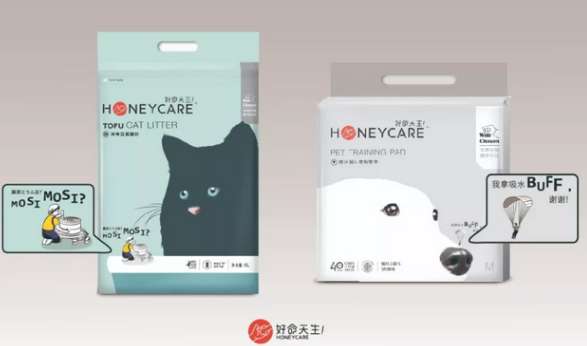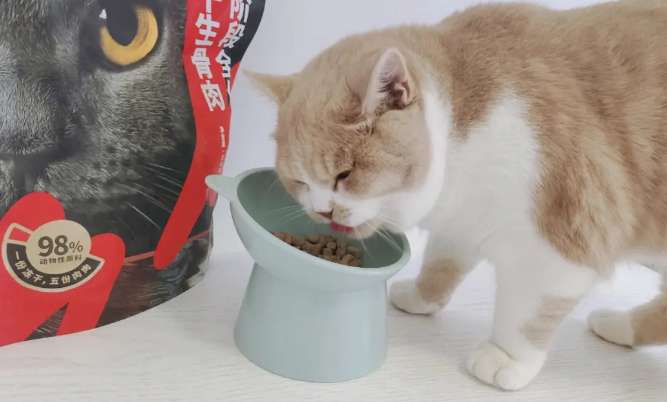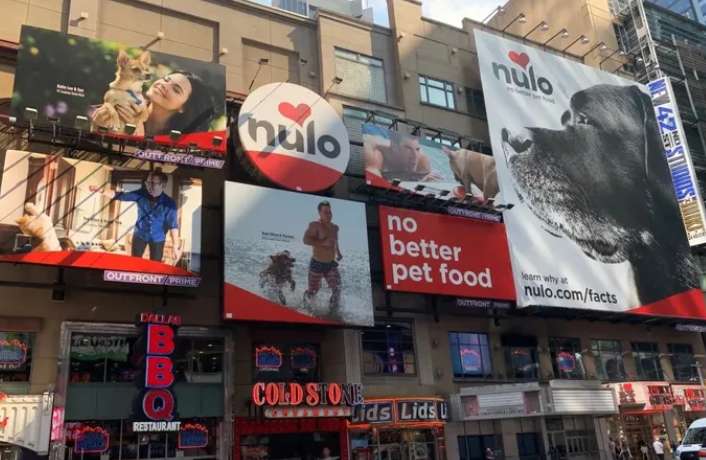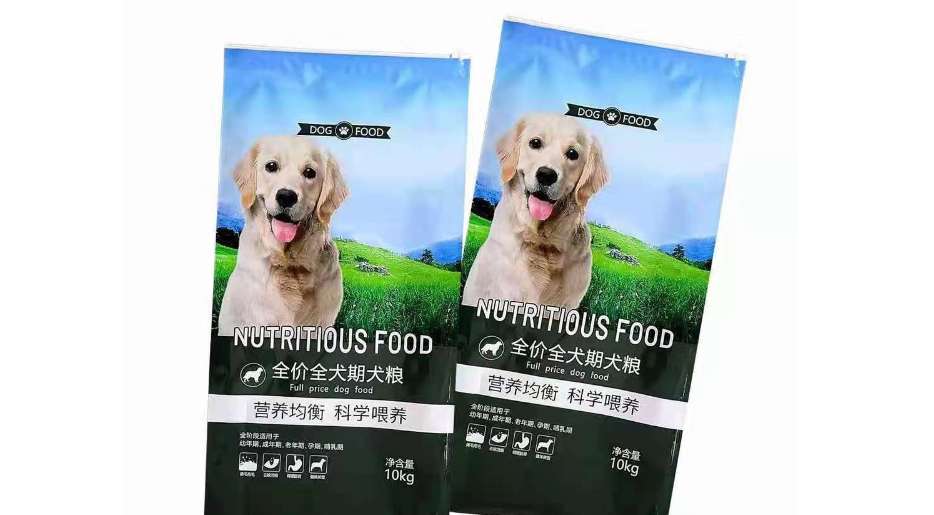In an environment where pet users are getting younger and younger, pet consumption is also constantly updated and iterated. The previous pet consumption model can no longer satisfy today's pet user groups.
What do these young people like to watch? What do they listen to? What are their preferences, and what are the characteristics of their consumption habits and spending power? The data points out that young consumers are a generation that values appearance, and they are willing to pay for good looks. Paying for the design, and paying more attention to the product itself, instead of blindly pursuing the added value of identity brought by the brand, "quality is king."

For HoneyCare's CEO Li Shun, young pet owners born after 1995 , which is exactly the target consumer group he is trying to capture. According to the characteristics and preferences of young people, from the day of its birth, regardless of the brand name, logo, products, packaging design, and pricing, the tone and core of the entire brand have been built around the post-95s pet-raising crowd. .
In an exclusive interview with Li Shun in the pet industry white paper, he said that "Haoshengshengtian" is not the name of a pet consumer goods brand in the traditional sense, but it reflects the brand's insight and understanding of the pet industry. Thinking - Starting from the relationship between people and pets, all models are developed around consumers.
How to understand this slightly special brand name? How does HoneyCare explain the "human-pet relationship" and use this as a starting point to upgrade the brand? Let's take a look.

1 The "human-pet relationship" gave birth to the pet industry
Join Before Alibaba, Li Shun gave himself a 279-day long vacation, firstly to review his previous work, and secondly to think about what to do next.
Before that, he served as the assistant to the senior vice president of Five Star Appliances. After the company was acquired by Best By (Best Buy), the world's largest electronics retailer in 2009, he followed the three founders of Five Star Appliances. Founded togetherFive Star Holding Group has successively hatched Kidswant (a leading brand in the maternal and infant retail industry), Huitongda (the largest rural e-commerce platform, Alibaba invested RMB 4.5 billion in 2018), Haoxiangjia (smart home platform, Li Shunzeng Served as COO, currently valued at US$1 billion) and several other brands.
The "Kids King" project inspired him: For so many years, Chinese businesses have been studying the upgrading or downgrading of people's consumption. Isn't there a new industry and a new consumer subject?
p>
The answer is the pet industry. Li Shun found that the consumption logic of pets and babies is naturally similar. The buyers and users are not the same, but the life cycle of their users far exceeds that of mothers and babies. During that long vacation, he traveled to more than a dozen cities, inspected dozens of pet stores, and began to study the pet industry. After joining Alibaba, he gradually accumulated knowledge of the entire pet industry thanks to his operating experience in Taobao's home decoration and pet industries. Industry awareness.

HoneyCare CEO Li Shun
"Pet Industry The emergence of the relationship between people and pets, analogous to human consumption, the closer the relationship, the stronger the desire to consume for him; the farther the relationship, the weaker the desire to consume. The emergence of the pet industry is precisely because of the relationship between people and pets From tools and partners to friends and family, the closer the relationship, the stronger the desire to consume, the higher the frequency, and the higher the unit price per customer."
Looking further, in recent years, the growth of the pet industry The rapid development is closely related to the rapid growth of digitalization and intelligence in the entire society. Everything can be done through mobile phones, but people are becoming more and more lonely. As emotional and social creatures, our emotions need sustenance, and pets are a good choice. Coupled with the explosion of content channels such as short videos, the spread of pet-related topics and content has driven a group of people to raise pets. Based on the underlying logic of "human-pet relationship", the pet industry has begun to take root.
Although the penetration rate of pet keeping in my country is currently low, Li Shun believes that in the long term, the development of my country's pet industry is still in the dividend period of growing pet numbers. The growth of the entire market is concentrated in two aspects: the first is the increase in the number of new pet owners, and the second is the increase in the consumption breadth of existing pet owners (that is, the increase in ARPU value). These two factors support the growth of the pet industry. . However, from the perspective of the industry chain, the pet industry is in a stage of decentralized development, whether upstream, channels or terminals, so there are still a lot of opportunities at each end, which can be described as a blue ocean market.
From the perspective of investment logic, the ceiling of the pet industry is not yet visible, and there are opportunities at every end. For him, the pet industry is the next "maternal and infant industry."
In November last year, Li Shun left Alibaba and devoted himself to the pet industry. At that time, Hongzhang Capital, which focused on the large consumer sector, had invested in an OEM factory in the pet industry, which owned the HoneyCare pet brand to be transformed. He immediately became the company's CEO, started the upgrade and transformation of the original brand, and formed an "elite team."
It is reported that Shao Chunlong, the brand’s current vice president in charge of supply chain, is a 12-year veteran of the pet industry. He has developed thousands of SKUs and is familiar with the global pet supply chain; the omni-channel team has 8 years of experience in the e-commerce field. experience, and more than 3 years of experience in the pet industry; the brand and consumer operations team has also accumulated many years of experience in the pet industry and understands the industry and consumers.
2. Create high-looking, high-quality, affordable products
For Li Shun, the idea of upgrading the brand is to first reposition the target consumer group. The post-95s (post-90s-post-00s) are the core group of new pet owners. They closely follow the preferences of young people, which means they have grasped the positioning, core and tonality of brand upgrades: young consumers value appearance and are more interested in products. There are certain requirements for quality. At the same time, most of these people have just left school or started working. They are not very financially well-off and prefer affordable products when consuming. Therefore, the selection of new brands is to provide consumers with high-looking, high-quality, and affordable products.
In terms of building the core of the brand, the brand name was upgraded to "HoneyCare, a good life is born". This is not a pet brand name in the traditional sense. Li Shun explained that this name is also based on thinking about the relationship between people and pets - "Pets are passively selected throughout their lives. What kind of owner chooses them is this." The first and second step of a 'good life' is that as the pet grows, the owner can help it choose the right brands and products so that it can live a healthy and happy life. So a good owner + good products + good services together constitute To ensure the pet's lifetime of 'good life'."
In this brand upgrade, "HoneyCare is born with a good life" is extended around the core consumer groups from its name, logo to packaging design, with consistency and at the same time Guaranteed "high appearance". The brand logo is a human hand and a pet's paw put together; the packaging is full of small people and big pets, ensuring good looks, emphasizing the relationship and interaction between humans and pets, and also adding "Easter eggs" that young people like, such as game lines, etc. wait.
In order to achieve "high quality", products have also been upgraded. Li Shun introduced that the biggest difference after the upgrade of the brand’s most representative diaper pad product is the use of non-woven fabric technology. Although the material is simple, it is difficult to produce in practice. “Currently, I have not seen other products using this kind of technology. Craft changing pad products”. In terms of material, the "HoneyCare Good Life" diaper pad uses Japan's Sumitomo polymer absorbent material. In terms of design, it is divided into girlish styles.Junior models and "light luxury" high-end models focus on appearance and user experience.
Finally, in terms of "affordability", the brand does not use the traditional cost-profit pricing strategy, but sticks to the bottom line of appearance and quality, and "sets whatever price consumers can accept." He believes that the current profits in the pet industry are considerable, but most of them are "eaten" by channels. He hopes to use this part of the cost of buying traffic and channels to pass on the profits to consumers, thereby creating "affordable" products. .
3. The "moat" of the pet industry: in-depth operation of users
At the Beijing Pet Products Exhibition in March this year, HoneyCare made its debut at the exhibition, bringing not only urine Pad products, the product line has expanded to categories such as cleaning supplies, snacks and health care products, with a total of 32 SKUs. Li Shun revealed that there are four key words for brand upgrade this year. The first is "full category".
It is reported that this year the brand will have more than 100 SKUs, and through independent research and development + original design + global supply chain selection, it will cover all aspects of pet life as much as possible. This logic is also based on the in-depth operation of user relationships. HoneyCare naturally adopts a heavy membership system and builds brand capabilities around members. Because when the cost of attracting traffic is fixed, users have consumption needs in multiple categories. The priority is to broaden the categories, which is also to allow users to "catch them all" on the same platform.
In the mini-program mall of Haoshengshengsheng, I learned that the brand has launched a 29 yuan/year membership card, which allows you to experience exclusive prices for products, priority delivery, and priority in enjoying welfare activities and other services. Subsequent brands will continue to explore a systematic operating model.
In this regard, Li Shun said, “In recent years, we can see that both large e-commerce platforms such as Alibaba and JD.com, as well as brands in vertical segments (Procter & Gamble, etc.) have launched their own membership systems. , essentially hoping to convert public domain traffic to the private domain for in-depth operations to enhance user stickiness and repurchase rate, and membership is undoubtedly the best tool to retain users at the moment. But membership is definitely not superficial. Points and membership prices, to truly be a good member is to create a series of valuable activities and rights around members, and have a systematic operating model to allow members to have an emotional connection with the brand, generate trust, and form a strong relationship."
The second keyword is "omni-channel". This year, HoneyCare will explore third-party platforms such as online selected e-commerce and content e-commerce. In the future, it will work together online and offline to run through the city. Pilot. The third is "global coverage", which means that brands and products are exposed on a large scale to build brand awareness. Finally, there is the "full link". As a company that deeply operates user relationships, it will focus on how users generate value. This is the starting point of everything for the brand.
The pet industry is an industry with a long user life cycle, which is longer than the life cycle of the maternal and infant industry. Because pets have a life span of nearly 20 years, pet owners may keep pets for multiple generations. Therefore, in Li Shun’s view, the pet industry’s barriers andThe moat does not lie in products and channels (of course these two aspects are the foundation), but in users and operations.
This year, he set a tone for HoneyCare: to make good products, run the business model of "full product category selection + heavy membership system", build a user value system, and try new channels, and will pursue “greater development” next year.





